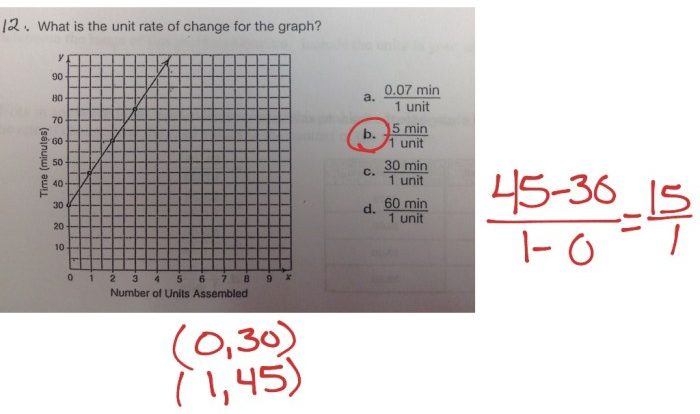The Literary Terms Diagnostic Answer Key serves as an invaluable tool for educators, providing a structured and comprehensive approach to assessing students’ understanding of literary concepts. This guide delves into the purpose, structure, key features, applications, design considerations, and evaluation criteria of literary terms diagnostic answer keys, empowering teachers with the knowledge and resources to effectively utilize this assessment tool.
By employing a literary terms diagnostic answer key, educators can pinpoint areas where students require additional support, track their progress over time, and differentiate instruction to meet the diverse needs of learners. Moreover, this guide explores best practices and common pitfalls to consider when designing an answer key, ensuring its effectiveness and accuracy.
Literary Terms Diagnostic Answer Key
A literary terms diagnostic answer key is a tool used by educators to assess students’ understanding of literary terminology. It provides a list of literary terms and their definitions, along with examples of how each term is used in literature.
Diagnostic answer keys can be used for a variety of purposes, including:
- Identifying areas where students need additional instruction
- Providing feedback to students on their understanding of literary terms
- Tracking student progress over time
Diagnostic answer keys typically include a variety of literary terms, such as:
- Figurative language(e.g., simile, metaphor, personification)
- Literary devices(e.g., foreshadowing, symbolism, irony)
- Genres(e.g., novel, short story, poetry)
- Elements of plot(e.g., exposition, rising action, climax)
Using a literary terms diagnostic answer key can help educators to assess students’ understanding of literary terminology and to identify areas where they need additional instruction. This information can then be used to improve instruction and to help students to develop a deeper understanding of literature.
Key Features of a Literary Terms Diagnostic Answer Key
A literary terms diagnostic answer key is a valuable tool for teachers and students alike. It can help teachers assess student understanding of literary terms and concepts, and it can help students identify areas where they need additional support. To be effective, a literary terms diagnostic answer key should include the following key features:
A clear and concise explanation of each literary term. The explanation should be written in language that is easy for students to understand, and it should provide examples of how the term is used in literature.
A variety of question types. The questions should assess students’ understanding of the term in different ways, such as through multiple choice, short answer, and essay questions.
A scoring rubric. The scoring rubric should provide clear criteria for assessing student responses. This will help to ensure that students are evaluated fairly and consistently.
The following table provides a sample of the different sections that a literary terms diagnostic answer key could include, along with their corresponding content:
| Section | Content |
|---|---|
| Literary Terms | A list of literary terms, with definitions and examples |
| Multiple Choice Questions | Questions that assess students’ understanding of the terms |
| Short Answer Questions | Questions that require students to explain the terms in their own words |
| Essay Questions | Questions that require students to apply their understanding of the terms to a specific text |
| Scoring Rubric | Criteria for assessing student responses |
Each section of the answer key can be used to assess student understanding in a different way. The multiple choice questions can be used to assess students’ basic understanding of the terms, while the short answer questions can be used to assess their ability to explain the terms in their own words.
The essay questions can be used to assess students’ ability to apply their understanding of the terms to a specific text.
By using a literary terms diagnostic answer key, teachers can gain a better understanding of their students’ strengths and weaknesses. This information can then be used to tailor instruction to meet the needs of individual students.
Applications of a Literary Terms Diagnostic Answer Key
A literary terms diagnostic answer key is a valuable tool that can be used to assess student understanding of literary terms and concepts. By providing correct answers to diagnostic questions, an answer key can help teachers identify areas where students need additional support.
Additionally, an answer key can be used to track student progress over time. By comparing student responses to the answer key on multiple diagnostic assessments, teachers can identify students who are making progress and those who may need additional support.
This information can be used to inform instruction and provide targeted support to students.
Suggestions for Using the Answer Key, Literary terms diagnostic answer key
Here are some suggestions for how teachers can use a literary terms diagnostic answer key to differentiate instruction and provide targeted support to students:
- Identify areas where students need additional support:The answer key can be used to identify specific literary terms or concepts that students are struggling with. This information can be used to develop targeted instruction that will help students improve their understanding of these terms.
- Track student progress over time:The answer key can be used to track student progress over time. By comparing student responses to the answer key on multiple diagnostic assessments, teachers can identify students who are making progress and those who may need additional support.
- Provide targeted support to students:The answer key can be used to provide targeted support to students. By identifying the specific areas where students need help, teachers can provide them with the resources and support they need to improve their understanding of literary terms and concepts.
Design Considerations for a Literary Terms Diagnostic Answer Key
When designing a literary terms diagnostic answer key, several key considerations should be taken into account to ensure its effectiveness and accuracy.
Best Practices for Designing an Effective Answer Key
- Clarity and Conciseness:The answer key should be written in clear and concise language, avoiding ambiguity and providing precise definitions and explanations.
- Organization and Structure:The answer key should be organized in a logical and structured manner, making it easy for users to navigate and locate the information they need.
- Comprehensiveness:The answer key should cover all the literary terms included in the diagnostic, providing definitions, examples, and any other relevant information.
- Accuracy and Reliability:The answer key should be accurate and reliable, drawing on credible sources and ensuring that the information provided is correct and up-to-date.
- Accessibility:The answer key should be accessible to students of varying levels of understanding, providing explanations and examples that are appropriate for their needs.
Common Pitfalls to Avoid When Designing an Answer Key
- Lack of Clarity:Using ambiguous or overly technical language can make the answer key difficult to understand.
- Incompleteness:Failing to provide complete definitions or explanations can leave users with unanswered questions.
- Inaccuracy:Providing incorrect or outdated information can undermine the credibility of the answer key.
- Poor Organization:An answer key that is disorganized or difficult to navigate can frustrate users and make it difficult to find the information they need.
- Lack of Accessibility:Using overly complex or technical language can make the answer key inaccessible to students with varying levels of understanding.
Evaluation of a Literary Terms Diagnostic Answer Key

The effectiveness of a literary terms diagnostic answer key can be evaluated based on several criteria. These criteria assess the accuracy, clarity, and comprehensiveness of the answer key, as well as its alignment with the intended learning objectives.
The following table compares different evaluation criteria and their corresponding indicators of effectiveness:
| Evaluation Criteria | Indicators of Effectiveness |
|---|---|
| Accuracy | – Correctness of answers
|
| Clarity | – Use of precise and unambiguous language
|
| Comprehensiveness | – Inclusion of all relevant literary terms
|
| Alignment with Learning Objectives | – Matches the specific literary terms and concepts taught in the course
|
To use these evaluation criteria, an educator can review the answer key and assess its:
- Accuracy by comparing the answers to established literary definitions or other reliable sources.
- Clarity by examining the language used and identifying any potential areas of confusion.
- Comprehensiveness by ensuring that the answer key includes all the literary terms covered in the course.
- Alignment with Learning Objectives by comparing the answer key to the course syllabus or lesson plans.
By considering these criteria, educators can determine the effectiveness of a literary terms diagnostic answer key and make informed decisions about its use in assessing student learning.
General Inquiries
What is the purpose of a literary terms diagnostic answer key?
A literary terms diagnostic answer key provides a structured and comprehensive assessment of students’ understanding of literary concepts, enabling educators to identify areas where additional support is needed.
How can a literary terms diagnostic answer key be used to track student progress?
By comparing student responses to the answer key over time, educators can monitor students’ progress in developing their understanding of literary terms and concepts.
What are some design considerations for creating an effective literary terms diagnostic answer key?
Clarity, comprehensiveness, alignment with learning objectives, and ease of use are key considerations when designing an effective literary terms diagnostic answer key.


